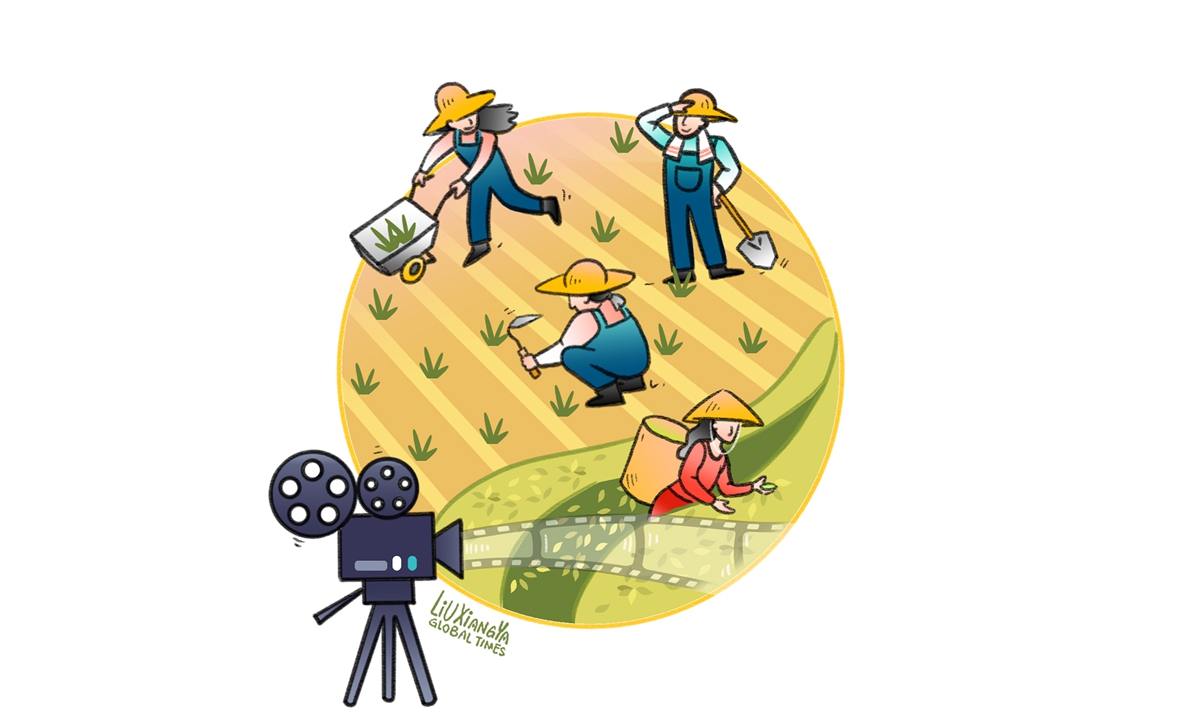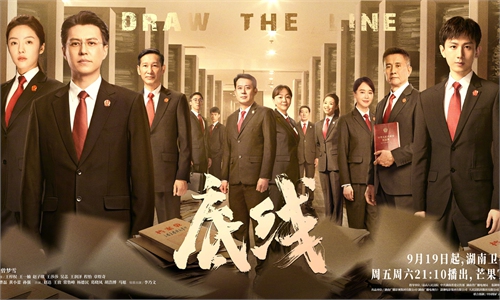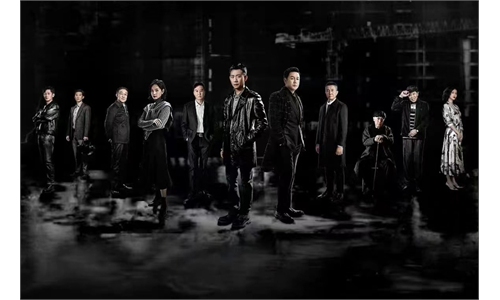ARTS / FILM
Resurgence of rural narratives as TV programs highlight serenity

Illustration: Liu Xiangya/Global Times
China's entertainment industry has witnessed a flourishing trend in TV storytelling and variety shows in recent years, characterized by intense plots and fast-paced narratives. However, amid this prevailing trend, another genre of film and TV programs has emerged, celebrating the intricate details of rural life and promoting the essence of agricultural civilization.
These works create a serene and uplifting space, offering solace to the soul, while unearthing the profound cultural heritage of China. Through their innovative approach and aesthetic appeal, these TV programs have showcased their unique value in modern society, leading a new wave in the realm of film and television production.
Throughout history, agricultural civilization has always been a rich source of inspiration for artistic creations in China. However, in recent years, with the rise of internet culture, film and television adaptations inspired by the subject of farming life have become more inclusive and open, incorporating a multitude of cultural elements from different perspectives and dimensions.
This change can be traced back to the early 21st century when a literary genre in China known as rural romance gained popularity in the online literary community. Rather than focusing solely on agricultural activities like farming and harvesting, this genre expanded its scope to include narratives set in rural areas, bustling marketplaces, handicraft industries and small businesses. It depicts the ordinary lives of everyday people and their gradual accumulation of happiness and fulfillment through hard work in both their home life and careers, aligning with the ethos of agricultural civilization that emphasizes reaping what one sows.
In recent years, this surge in narratives inspired by farming life has transcended the realm of literature and permeated film and television. Series such as The Story of Minglan and Romance on the Farm have been adapted from rural romance novels. In a similar vein, slow-paced variety shows like Back to Field, The Inn and Believe in the Land have chosen a countryside setting and adopted a documentary-style filming approach to present a gentle narrative rhythm.
These programs invite guests to manage their own plots of land. Furthermore, outdoor competitive and travel shows like Keep Running, HaHaHaHaHa and Go for Happiness have introduced segments and episodes featuring agricultural production and rural revitalization.
In just a few years, a picturesque panorama of agricultural civilization has been unfolded in dramas and variety shows, transforming the metaphorical concept of "farming" into a tangible practice and presenting realistic rural landscapes akin to the idyllic scenery of traditional Chinese culture.
The rise of film and TV narratives inspired by agricultural civilization has brought a breath of fresh air into the industry and the market.
First, these works revolve around the daily labor and interpersonal interactions of characters and guests. For instance, in The Story of Minglan, the protagonists share meals together throughout the four seasons, growing alongside their diverse and distinctive siblings, collectively weaving the warm fabric of a large family.
Second, these productions place a strong emphasis on showcasing knowledge related to food, clothing, shelter and transportation.
From the culinary creations in A Bite of China to the flower arrangement and tea brewing skills in The Story of Minglan, these works illustrate traditional skills and techniques that have been passed down through generations.
Last, these narratives focus on promoting rural revitalization, cultural tourism and environmental conservation, thereby generating positive social effects.
The scenic beauty, time-honored customs and folk art showcased in these programs have garnered immense attention from viewers, encouraging them to explore the charm of rural areas and contribute to the preservation and development of local cultural resources.
Nonetheless, the creators of such content face challenges in their quest to maintain the delicate balance between authenticity and entertainment.
They must find innovative ways to prevent these mundane daily activities from feeling monotonous and repetitive. Continuously exploring and tapping into the vast expanse of cultural elements related to agriculture, folklore and traditional customs will be essential to sustain this rising trend. Moreover, incorporating more diverse and inclusive perspectives and narratives can help expand the reach and impact of these productions, resonating with audiences across various backgrounds and demographics.
In conclusion, the resurgence of rural narratives in film and television represents a remarkable shift in the industry.
These long-format productions celebrate the beauty and serenity of rural life, while also highlighting the value of hard work and community ties.


